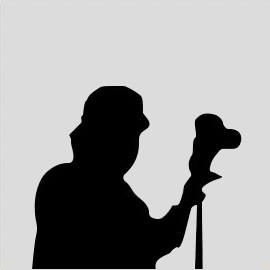0 Likes
...





History and OverviewBangkok is one of the twenty-six provinces that make up Central and Eastern Thailand. It's also the capital of the country and the largest urban area, sporting fifteen million people who live at a more relaxed pace than in any other giant metropolis.Its full ceremonial name (in a combination of Sanskrit and Pali languages) translates to:"The city of angels, the great city, the eternal jewel city, the impregnable city of God Indra, the grand capital of the world endowed with nine precious gems, the happy city, abounding in an enormous Royal Palace that resembles the heavenly abode where reigns the reincarnated god, a city given by Indra and built by Vishnukam."The history of Bangkok begins with the Chao Praya River, which was as important to Thailand as the Nile was to ancient Egypt. Bangkok sits in the heart of Thailand amidst a wide landscape of rice paddies, orchards and plantations. The river basin collects water from the Burmese mountains to the west, the mountains of southern China to its north, and a high plateau to the east.All of these combine to make for fertile land and abundant fishing which brought Thai settlers down from the north more than a thousand years ago. They gradually replaced the Khmer people and founded a kingdom that lasted 417 years, located at the city of Ayutthaya.The kingdom of Ayutthaya lasted from 1350 to 1767, during which time the country was called Siam. Prior to the Burmese burning of Ayutthaya, Siam consisted of a loose collection of city-states plagued by violence among warring factions.When Ayutthaya was destroyed by the Burmese in the eighteenth century, Bangkok took over duties as capital under the authority of General Phra Buddha Yodea Chulaloke. This General united the disharmony of Siam into a kingdom and as of 1782 he was crowned King Rama I of the Chakri Dynasty, which continues to this day.Rama I relocated the capital and center of government to a better strategic position on the eastern banks of the river, where modern Bangkok now sprawls. It is a place naturally fortified and surrounded by water on almost every side.Considering the short span of its history, Bangkok's growth has been incredible. Trade and treaties with foreign powers prevented colonization and Bangkok was building roads and ports already by 1860.Under King Rama V who saw the turn of the 20th Century, Bangkok boasted railroads, tramlines, the foundations for the modern Thai government and also religious freedom for Christianity and Islam in this Buddhist country. Racial tension was reduced by forcing the Chinese population to adopt Thai names.Bangkok experienced a period of tumultuous times in the 20th century with several military coups and abdications of the throne. Absolute monarchy came to an end with the introduction of a constitutional government in 1935.Getting ThereThe new International Suvarnabhumi Airport (BKK) is officially open. All domestic and international flights now arrive to and depart from the new airport 30km east from the city center. The airport is connected by a system of highways, high-speed rail link, shuttle buses and the ubiquitous taxi services. Express commuter trains will get you there in about 15 minutes.Bangkok Train Station connects with the Singapore line which runs along peninsular Malaysia.TransportationTuk Tuk is the way to go. These are motorized three wheelers roaming on the loose everywhere. No meter, no rules so you have to negotiate the fare up front. Good local advice or ripoff shopping scams come free with the ride, caveat emptor.Sky train loops around the perimeter of the city for an efficient and convenient way to get around, with awesome views to boot.Taxis are cheap but Bangkok's traffic problems are legendary, as in, gridlock plus sweltering heat... be ready. Taxis are best at night when the skytrain and subway aren't running, and there's apt to be less traffic on the roads.The Subway is called MRT; it reaches places the skytrain goeth not. Prices are between 15 and 40 baht.Motorcycle taxi! Listen, the driver is required to give you a helmet if you take one of these. Smarten up, your head weighs the same as a bowling ball and your neck muscles aren't nearly strong enough to hold it up during any unexpected, ahem, maneuvers.Bicycling can be a great way to get around Bangkok if you come prepared. Drivers seldom respect other road users, much less bikers. You are allowed to stash your bike on the roof of buses if you need to. When you stop for lunch, lock it or lose it!People and CultureThe local currency is the baht. Exchage rates are about 40 baht to the dollar at the time of this writing. The baht is divided into 100 satang.Be advised that Thai people have a deep, traditional respect for the Royal Family including the King, Queen and Royal Children. Dress neatly when visiting temples and religious shrines.Interesting religious symbolism pervades social customs. Rather than shaking hands, which is a Roman gesture indicating that aren't going to stab the other person with your sword hand, Thai people greet each other by pressing their palms together in a prayer-like gesture. Isn't that cool?Additionally, the head is regarded as the holiest part of the body. Therefore you should avoid touching people on the head, and try not to point your feet at people, it is considered very rude. Take off your shoes when you enter someone's home.Things to do, RecommendationsFirst of all you need to visit the largest temple in Bangkok, the Wat Pho Temple of Reclining Buddha. His feet alone are three meters long and the whole thing is covered in gold leaf.You can also get a traditional Thai massage at the temple, for about 200 baht per hour. Stimulating and invigorating!Text by Steve Smith.